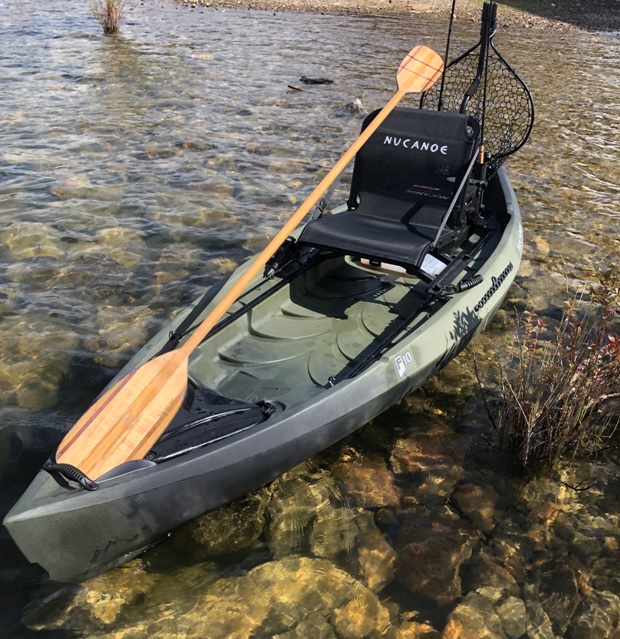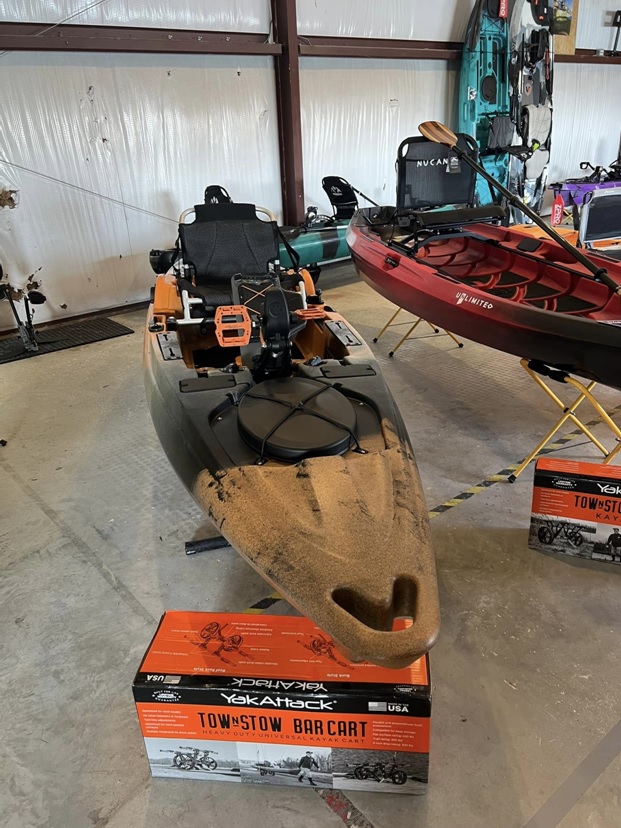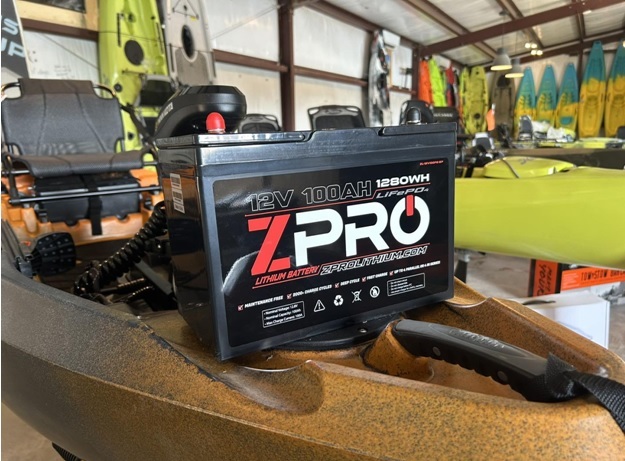Posted by Forrest on Nov 7th 2023
Pedal vs. Paddle vs. Power in Fishing Kayaks: Which Is for You?
The modern market is awash with specialized fishing kayaks for die-hard anglers, many of which offer advanced pedal-powered fin and propeller drives.
Others, especially hybrid kayaks like the NuCanoe Unlimited, are designed to be paddled, but still offer the option to mount pedal drives or battery-operated trolling motors.
This gives you an endless array of options in kayak power, but which is for you? We break down the main differences here.
Paddle Power
Paddle power is traditional. It can be fast, quiet, and effective, but it takes a skilled yak angler to deftly handle a paddle-powered kayak, especially in moving water or in a chop.
Paddle power also gives you the advantage of extra leg room, as even though most modern kayaks are equipped with adjustable seats, being paddle-powered means you’ll have more space at the front of the cockpit to stretch your legs, with no pedal drive unit in the way.
An experienced yakker can also paddle very silently, making paddle power preferable - for some - because it can potentially give you an advantage sneaking up on spooky, wary fish.
One drawback of paddle power is that it can be tiring. It’s easier to run a pedal-driven kayak, and even less taxing to run a battery-powered trolling motor.
Paddle-powered kayaks also tend to have the advantage of being both lighter in weight and easier on the wallet than those equipped with pedal drives.
Some pedal-driven kayaks have kick-up fins and retractable drives that make beaching and maneuvering weedy water easier. However, if you can’t run the pedal drive because the weeds are too thick, or there’s too much mud to run a trolling motor, you’ll be left dead in the water. In very shallow water, you can still paddle, even using the paddle as a pole. This makes paddle power the best option in the shallows and weeds.

Pedal Power
On the flipside, we have pedal-powered kayaks. These have a few advantages over paddle-driven models.
For one, they are designed to make efficient use of the fins and propellers the drive unit runs. They are optimized for speed and efficiency. More users also find it less tiring to pedal than to paddle, and they tend to be faster than paddle-powered kayaks.
They are more suitable in open water and deep water, where speed and efficiency are warranted - but they can’t navigate some weed-choked lakes, so keep that in mind.
Pedal-powered kayaks also tend to be very, very stable - enough to stand and fish in. They are also usually, but not always, feature-rich, and have plenty of storage room for anglers to stow their coolers, catch, and gear.
Pedal-driven kayaks are not without their limitations, though. They are heavier and have deeper drafts, making portage, as well as cartop transportation, more difficult. Moreover, it is possible (albeit unlikely) for a mechanical breakdown to hobble one. That won’t happen with a paddle kayak.

“Power” Power
Last but not least we have actual power, offered by models like the Old Town Autopilot 120, equipped with Minn Kota’s Spot-Lock Technology and an onboard motor.
Other kayaks have a square transom with a 4-bolt mount designed to accept popular trolling motors, and room at the stern to mount a battery.
Conventional “power” power offers things that neither pedal or paddle driven kayaks can offer. One is speed. Equipped with a powerful-enough trolling motor, some kayaks can top 5 knots or more, which is crazy fast in a yak. This makes them better on big, open water, especially in the face of strong headwinds or opposing currents.
Another is that these kayaks are accessible to handicapped and older anglers that might not have the strength and energy necessary to paddle or pedal.
All the same, power-driven kayaks are also not without their limitations. Batteries can die and motors can burn out, leaving you dead in the water - which is one reason you should always have a paddle as a backup.
Another thing to keep in mind is that in extremely shallow or weedy water, a propeller-driven kayak is a non-starter. You won’t be able to use one in situations like these. Only a paddle kayak will work in these situations.

Hybrid Kayaks Like the NuCanoe Unlimited: The Best of All Worlds
While you will need to consider questions related to where you will be fishing and how much you want to spend before you can decide what fishing kayak will work best for you, remember that there are options in the middle ground.
The first compromise is a hybrid kayak like a NuCanoe Unlimited. Hybrid kayaks, which often have open decks, can be easily paddled, but some are also equipped with wiring access plates for electronics and have mounts for pedal drives (the Pivot Drive in the case of the NuCanoe Unlimited) or several options to mount a trolling motor and a battery.
Also, any fishing kayak that has room at the stern, along with a square transom, can either accept, or be modified to accept, a battery and a trolling motor. You can easily adapt these vessels to accept a power drive to serve as an accessory to paddle power - or to replace it.
Keep that in mind, whether you ultimately opt for paddle, pedal, or battery power. There are always ways to customize your rig to run more than one type of propulsion.
Contact Us for Recommendations or Assistance
Not sure whether paddle, pedal, or battery power is right for you? Let us know what you fish for, where, and what you need in a fishing kayak and we’ll help you pick out one that’s perfect for you.
We have options across the board from the leading makers, including NuCanoe, Old Town, Jackson, HOODOO, Hobie, Native, and more. Check out our collection today and get in touch with us if you have any questions.

